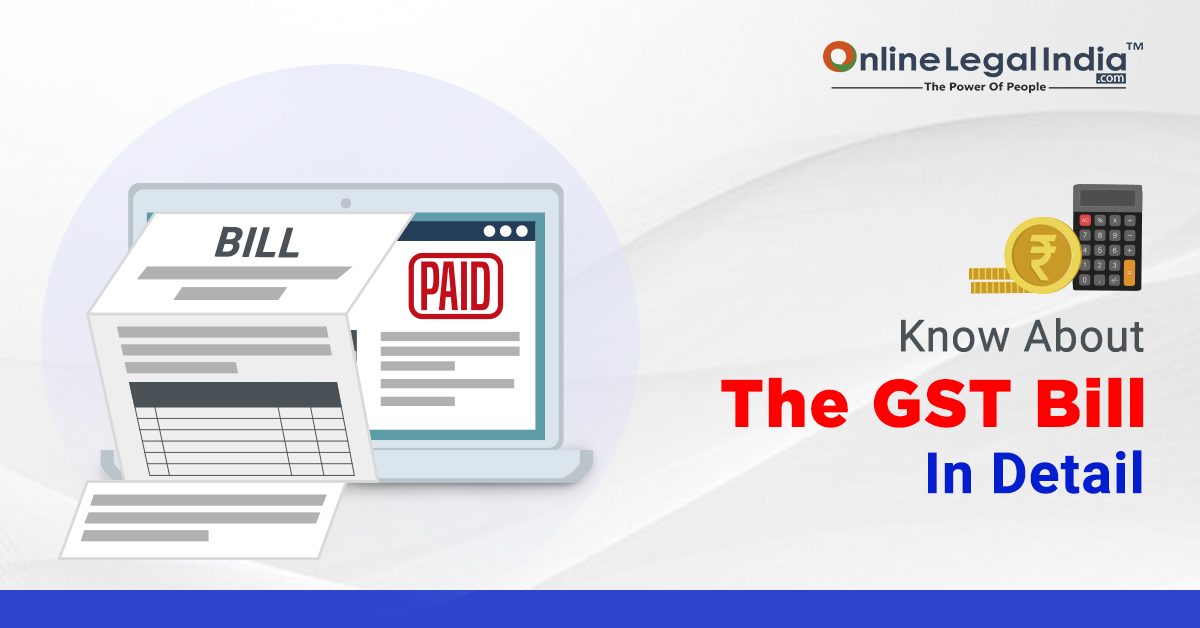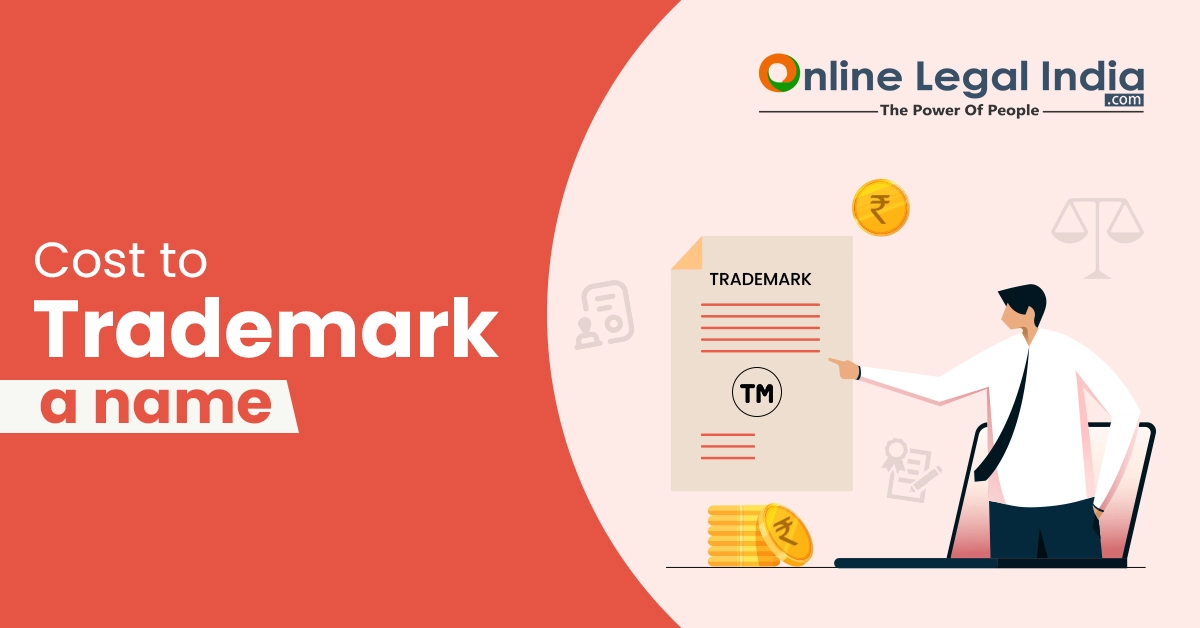How to File a Consumer Case through Consumer Complaint Number
03 May, 2024

 By Online Legal India
Published On 02 Sep 2022
Updated On 06 Jan 2023
Category GST
By Online Legal India
Published On 02 Sep 2022
Updated On 06 Jan 2023
Category GST
With GST on the horizon, it is vital for sellers to rely on constant invoicing in accordance with the GST rules. Issue the relevant GST invoices on time as it is a true usher for the company if you, as a seller or service provider, don't want to run into any obstacles. Are you new to this field and finding things confusing? Feel free, though; we've got you covered. You will get an overview of the GST bill style, GST invoice regulations, types of invoices, and much more in this succinct reference to GST invoices. Continue scrolling to find everything you were seeking.
Gross Service Tax invoice bill is a list of the delivered products and services along with the unpaid balance. A GST Invoice Bill for the offered services is provided to the customer by the supplier of goods and services. The GST bill format generally includes notable elements like the names of the involved parties as well as specifics about the delivered goods and services. It includes the following elements in addition to the parties involved:
These details serve as the foundation of the GST bill. The GST bill format often includes information regarding the specifics of the vendor, customer, goods, and services. After discussing what a GST invoice is and the fundamentals of the GST invoice bill structure, let's examine who is in charge of generating a GST bill.
A person is required to issue a GST invoice in the appropriate GST invoice format if they run a GST-registered firm. For every transaction between the two parties, the seller is required to provide the bill in the buyer's name. The buyer receives the GST purchase invoices from the GST-registered trader for the services used.
Every bill or invoice has a specified format, and the GST bill is no different. The trader must adhere to the GST invoice bill format when creating the invoice.
When it comes about the GST bill, the following advice is mandatory:
It is the duty of an input distributor to issue the bill.
In addition to the fields mentioned, the GST tax invoice should include the following information:
In light of the format in points, it might appear a little awkward. It was intended to provide you with a general idea of the GST bill format. Let's now have a look at the actual GST bill format for tax invoices.
Despite the fact that the format may change from one supplier to the next. So, don't think it's wrong if you get a different one. However, the fundamental data on all such bills must coincide with the information shown. You can determine whether or not the invoice provided by the seller is appropriate by comparing it to this GST invoice sample. If it includes all the accepted fields, then use it; otherwise, confirm the vendor's legitimacy. The next essential information you need to be aware of after reading the GST bill template is the deadline for releasing these invoices.
Here are some GST bill images that will give you a clear notion of how to produce a GST bill if you're seeking the official GST bill book format.
It is obvious that you cannot issue invoices for customers without the GST bill format once you have references for the GST bill book format. Therefore, create your company's GST bill book and send the necessary GST invoices to your customers for the provision of goods.
Most people believe that they should get their GST invoice just as soon as the goods arrive at their location. Well, that's not how things operate. Creating GST invoices as soon as the products are dispatched is perplexing. The Indian Government has established a deadline for the suppliers to adhere to in order to ameliorate the situation and take this into consideration.
You must create this bill as a goods supplier on or before the day the aforementioned goods are transferred. When we refer to the transfer of goods or removal of goods under Section 2 (96) of the CGST Act, 2017, we mean:
The supplier may issue the bill on or before the day the payment is made if the bill is for a buyer who consistently places orders with the same provider. Only in the situation of continuous supply is this applicable.
Within 30 business days on the day the service is rendered, the provider must issue the GST invoice bill for the rendered services.
If you used banks in addition to other financial institutions to obtain financial services, you will receive your issued invoice 45 days after the services were obtained. Banks and financial institutions are not required to send the GST invoice within 30 days of the service supply, in contrast to other service providers.
To protect themselves from potential penalties, the dealers must abide by a precise set of GST invoice rules. Here is a list of the GST invoice terms and conditions that apply to all suppliers and recipients who are GST registered in India.
If the total value of the given goods and services is less than 200, then the seller is not required to send a bill. Additionally:
The seller is required to provide the invoice should the recipient request it.
However, for all the supplies for which the tax invoice wasn't initially given, the seller must prepare a consolidated invoice/aggregate invoice by the end of the day.
A GST-registered buyer who buys products or uses services from an unregistered supplier is responsible for paying the applicable tax. Furthermore, he must send out an invoice the same day he gets the relevant goods or services.
When a GST-compliant trader gets advance payment from the customer for the anticipated transaction, the supplier should think about providing a receipt voucher. To acknowledge the buyer's advance payment is done.
In addition to the fundamentals found on the GST invoice, an export invoice typically includes additional essentials. Which are:
Delivery Typically, the seller will issue a challan under the following circumstances:
For revising the above mentioned taxable values, the seller has to issue either a debit note or a credit note based on the correlated changes.
Debit Note: It is used when the seller needs to increase the charged taxable value within the original invoice. It is also known by the name of the supplementary invoice.
Credit note: When the taxable amount needs to be reduced from the original invoice, the seller issues such invoices. However, the credit note must be sent by the seller before or on September 30. The supply must be returned within the same fiscal year that this is done.
Conclusion: A crucial document that increases the likelihood of a successful transaction between buyer and seller is the GST invoice bill. It contributes to the advantages of the Input Tax Credit in addition to serving as a piece of evidence. By this point, you are aware of the precise format for GST bills that you must use to avoid complications later on. For a better customer experience, the supplier understands precisely when the invoice needs to be given. You are prepared to close your deals with ease because you are not worried about GST objections.

How to File a Consumer Case through Consumer Complaint Number
03 May, 2024

How to Trademark your logo and protect your Brand
30 Apr, 2024

How to Trademark My Company Name in India
29 Apr, 2024

Know the Cost to trademark a name and all the fees required
23 Apr, 2024

How to Register a Brand Name
17 Apr, 2024

Consumer Complaint against Tamil Nadu Electricity Board TNEB
30 Nov, 2020

How to Take Legal Action against Mental Harassment in India?
07 Nov, 2020

UPPCL Uttar Pradesh Power Corporation Ltd. Complaint Filing
19 Nov, 2020

How to File a Complaint Online in Consumer Court in India
27 Nov, 2020

Online Complaint Filing against Hero Motocorp
04 Dec, 2020